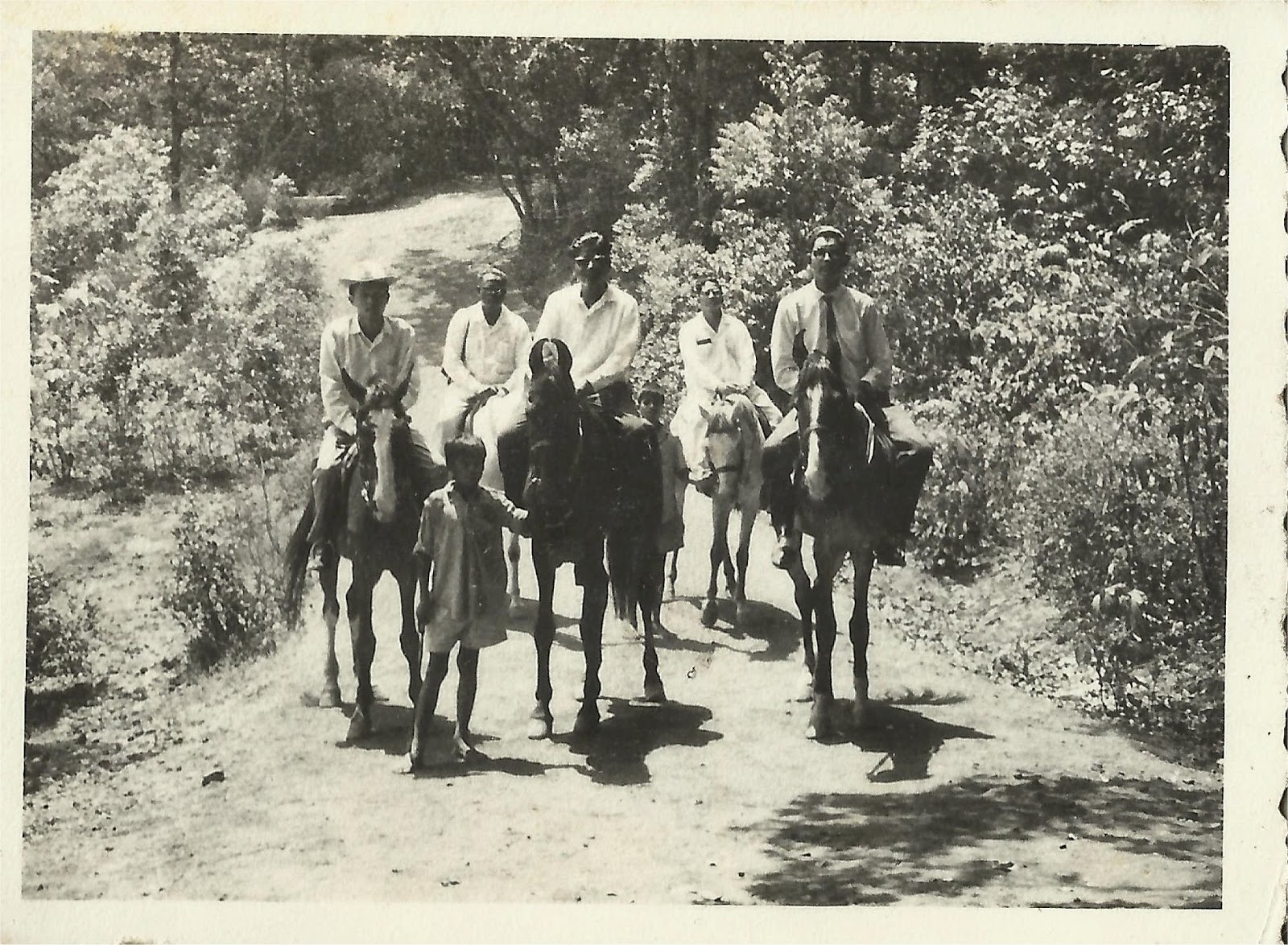These are a collection of fairly random pictures but still some special occasion. My memory is a bit hazy and so while actual details can be slightly wrong, the names missing they still give a glimpse about what Indian Railways is all about. Today with internet, social media and Google at our finger tips, literally, we comment and complain about various aspect of Railways. These while understandable the bigger tragedy is that whatever exists today is due to the unknown, unnamed, forgotten officers, labourers who literally created something called Railways out of nothing. In those days the engineers and officers, the contractors and labourers did not equipment, safety, labour laws, environmental activists and they built the edifice over which many of us sit and pontificate.
My father retired in 1988 and died in 2000 and a lot of what he said, commented must be seen in the context of those days.
My father often said, in jest and frustration - if everyone in our days were like the people of today we would still be in the age of dinosaurs. It is not that he didnt appreciate the work being done by the current generation but when people complain and gripe he would say that if his and previous generations had also spent time complaining and protesting nothing would ever have got done. Starting off as a admirer of communist idealogy because he was enthused by Nehru and his generation he soon lost that admiration and infact was trenchant in his criticism of them. He said that in the name of socialism (which he strongly believed in) the communists often prevented progress and development. He said that they preferred people to be beggars beholden to the government. Looks like in 2015 nothing much has changed with respect to the communists.
If you observe the photograph above, you will notice that a fellow officer, maybe a senior wearing a tie and on horseback. Today officers probably use google earth, satellite mapping, choppers and such stuff but in those days railway officers went on horseback, selected how the railway line would go and literally convinced the people living along the line to contribute to nation development.
 |
| While I am unsure of the location I suspect it is some place in Andhra Pradesh near Vijayawada |
The couple in the above picture as I recollect are Mr and Mrs Banerjee. I have no clue as to his first name. All I do remember is that this gentleman later went on a deputation to the Asian Development Bank at a very senior level like a President or Director or some such thing
 |
Have no information on this picture
|
 |
Again no information on location but I suspect that this is in some project site in Andhra Pradesh
|
 |
The first concrete work as it starts after traditional pooja and the symbolic pouring of concrete by the guest
|
 |
As children of railway officers who were constantly travelling our guardians were the staff that worked for railways. Here is me with some of them. I remember two names, Lingappa (left extreme) & Mallesha (2nd from left)
|
 |
| Child labour or just very small build. Workers at the project site |
 |
NO clue who the officers are but it was during a project in Karnataka near Hospet for transporting iron ore. I suspect this was Mr. GP Warrier the then Chairman of the Railway Board
|
 |
| Again the same set of senior officers visiting the construction site. My father is 2nd from left |
 |
| The tools that labourers then had were primitive and they used their hands to build the edifices that serve us even today |
 |
| Another view of the work in progress |
 |
| These men, many of whom may not even be alive today worked without respite for a pittance for building the nation and its railways |
 |
| Unlike today such massive girders were manually moved and shifted by labourers. |
With computers, cranes, heavy vehicles safety systems and what have you our Indian systems today take more time to execute projects than what the generation of the sixties did with nothing. Here above is a picture of the labour literally manually pushing a massive girder weighing tons onto a bridge. The key to the combined push of a few dozen labour converting into the force that moved this huge girder was timing. Every single person had to push at the same instant wherever they were positioned along the girder. The leader of the pack invariably shouted out inane, funny, dirty, filthy comments and as he finished the phrase everybody in unison shouted "AISA" and then pushed. The girder would move a few millimeters literally and this was continued over days till the same was in place across the bridge.
 |
| Often the girder would be shifted over the already built railway tracks |
 |
| The labour would then move and push the girder into exact position |
 |
| Looking at him you would think he is superman pushing a massive girder :-) |
 |
| Labour at work |
 |
| Steel sleepers |
Today the sleepers used to lay the rails are all made of wood. Then they were made using steel and to specific design/shape. Large quantities were manufactured and this was an example of how the Indian economy moved. Public sector steel mills manufactured these steel sleepers and the steel rails, transported them over trains to be used to build tracks using the sleepers which then enabled a train carrying iron ore to move the iron ore to the steel mills which was the raw material to manufacture these.
The next segment of this blog is below


















Comments